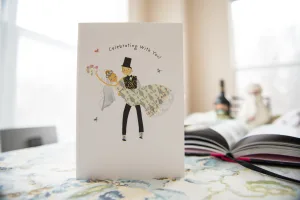Motion Graphics vs. Special Effects: The Battle of Pixels

Motion graphics and special effects are two terms that are often used interchangeably in the world of film and video production. However, while they may seem similar, there are some key differences between the two.
Motion graphics, as the name suggests, refer to graphics that move. They are essentially animated graphic design elements that are used to enhance a video or film. Motion graphics can be used to create anything from simple title sequences to complex animations that help to explain a concept or idea. They are often used in advertising, corporate videos, and explainer videos, among other things.
Special effects, on the other hand, refer to any visual or audio effect that is created using practical or digital means. Special effects can be used to create anything from explosions and fire to creatures and landscapes that do not exist in the real world. They are often used in action movies, science fiction films, and fantasy movies to create a sense of realism or to transport the viewer to a different world.
Motion Graphics: A Laughing Matter
The Funny Side of Motion Graphics
Motion graphics are not just about creating informative or engaging visuals, they can also be downright hilarious. From quirky characters to absurd animations, motion graphics have a funny bone that can tickle even the most serious of viewers.
In fact, motion graphics can be so funny that they have become a staple in the world of comedy. Late-night talk shows, sketch comedies, and animated sitcoms all use motion graphics to add a touch of humor to their content.
Why Motion Graphics are a Barrel of Laughs
One reason why motion graphics can be so funny is their ability to exaggerate and distort reality. With the help of motion graphics, anything is possible – from a talking potato to a dancing elephant. This creative freedom allows motion graphics designers to push the boundaries of humor and create visuals that are truly unique.
Another reason why motion graphics are so funny is their ability to convey complex ideas in a simple and entertaining way. By using animated characters and visual metaphors, motion graphics can explain even the most complex topics in a way that is easy to understand and enjoyable to watch.
Overall, motion graphics are not just a tool for creating informative or engaging visuals, but also a source of laughter and entertainment. Whether it’s a funny cartoon or a witty explainer video, motion graphics have the power to make us laugh and brighten up our day.
Special Effects: More than Just Smoke and Mirrors
Special effects are a staple of modern cinema, but they are more than just smoke and mirrors. They can be comically complex and have a wide range of uses beyond just scaring audiences.
The Comical Complexity of Special Effects
Special effects can be incredibly complex, requiring teams of skilled professionals to create them. For example, in the movie “Avatar,” the team used a combination of motion capture, computer-generated imagery, and practical effects to create the world of Pandora. This required a team of over 900 people and took over four years to complete.
But special effects can also be comically simple. In the movie “Jurassic Park,” the sound of the T-Rex roar was created by combining the sounds of a baby elephant, a tiger, and an alligator. Sometimes, the simplest solutions are the most effective.
Why Special Effects are not Just for Scaring
Special effects are not just for creating scary monsters or explosions. They can also be used to enhance the story and create a more immersive experience for the audience. For example, in the movie “Forrest Gump,” special effects were used to insert Tom Hanks’ character into historical footage. This helped to create a sense of realism and made the story feel more authentic.
Special effects can also be used to create fantastical worlds and creatures that would be impossible to create with practical effects alone. In the movie “The Lord of the Rings,” special effects were used to create the character of Gollum. This required a combination of motion capture and computer-generated imagery, and the result was a character that felt real and believable.
In conclusion, special effects are more than just smoke and mirrors. They can be comically complex or simple, and they have a wide range of uses beyond just scaring audiences. Whether creating fantastical worlds or enhancing the story, special effects are an integral part of modern cinema.
Comparing Apples and Oranges: Motion Graphics vs Special Effects
The Lighter Side of Differences
Motion graphics and special effects are two terms that are often used interchangeably, but they are not the same thing. In fact, they are quite different from each other. It’s like comparing apples and oranges. They are both fruit, but they are different in taste, texture, and appearance.
Motion graphics is a type of animation that focuses on giving movement to graphic design elements. It is used to convey information or emotion in a self-contained animation. On the other hand, special effects (SFX) are used to create realistic scenes by combining existing footage with computer-generated imagery (CGI). SFX includes pyrotechnics, prosthetics, and other practical effects.
The Humorous Harmony Between the Two
Despite their differences, motion graphics and special effects can work together harmoniously to create stunning visual effects in movies, TV shows, and other forms of media. It’s like the perfect marriage of apples and oranges. They complement each other.
For example, motion graphics can be used to create animated titles and credits in a movie, while special effects can be used to create explosions, fire, and other practical effects. Motion graphics can also be used to create animated infographics that explain complex concepts, while special effects can be used to create realistic monsters and creatures.
In conclusion, motion graphics and special effects are two different things that can work together to create amazing visual effects. They are like apples and oranges, different but complementary. Filmmakers, graphic designers, and other creative professionals can use both motion graphics and special effects to create stunning visuals that captivate audiences and tell compelling stories.
Conclusion: The Last Laugh
In conclusion, while motion graphics and special effects are often used interchangeably, they are two distinct approaches to visual communication. Motion graphics are best for outlining or emphasizing facts and illustrating a point you’re trying to make, while special effects are used to create realistic or fantastical elements in live-action films.
As Wilfred Owen’s poem “The Last Laugh” reminds us, even in the midst of war and destruction, there is still room for humor and irony. Similarly, in the world of visual effects and motion graphics, there is room for both technical skill and creative expression. The key is to find the right balance between the two.
At the end of the day, whether you’re creating motion graphics or special effects, the goal is always to tell a compelling story and engage your audience. By mastering the tools and techniques of these two disciplines, you can bring your ideas to life and make your mark in the world of visual communication.







